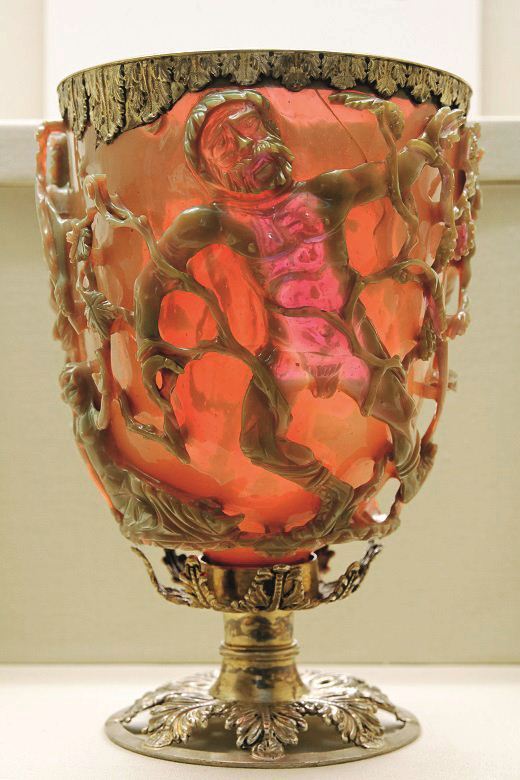It’s a popular hubris that we live in an age of unprecedented technological innovation – that our ancestors lived in a time where there were fewer technological advances, blinded as they were by their primitive superstitions and lack of access to the resources we have today.
While we certainly live in an era of amazing technology, it’s not necessarily true that our level of innovation is unprecedented. The fact of the matter is that our ancestors were just as smart as we are (in fact, given the human brain size has been shrinking for centuries, they might have been smarter.) And as archaeologists uncover more about the past, they’ve also learned that many technologies we take for granted today were first developed centuries or even millennia ago, only to be lost.
Take, for example, plastic surgery. It’s something we think of as a relatively new technology, right? But in fact, plastic surgery was practiced in India centuries before the birth of Christ. It continued to be practiced for thousands of years, but wasn’t “discovered” in Europe until the 18th century, when British doctors learned about it from India.
Recently, there have been two recent engineering discoveries from Ancient Rome that have the potential to shake up some major areas of industry – discoveries that show we still have a lot to learn from our ancestors.

The first finding is rather astonishing. As noted earlier this month by Zeeya Merali, a 1,600 year old chalice known as the Lycurgus Cup have proved to be more than just a stunning work of art. It’s also an example of one of the earliest forms of nanotechnology.
The cup, as Merali notes, was actually a mystery for centuries. That’s because it appears green when lit from one angle, but red when lit from a different angle. It wasn’t until the 1990s, after decades of study in the 20th century, that it was determined how it was created. As it turns out, the glass itself was infused with particles of silver and gold that were only about 50 nanometers in diameter. The particular ratio of the mixture was definitely known, as other similar cups have been discovered.
In a paper from 2007, scientists who have studied the cup noted that “[e]ven using modern powerdriven tools, this type of vessel takes a great deal of time to complete.” But more than that, this technology might turn out to revolutionize the pharmaceutical industry.
That’s because researchers from the University of Illinois at Urbana-Champaign, using the same techniques the Romans used, earlier this yeardeveloped a device that enables them detect DNA and proteins without having to chemically modify them first. That lowers the overall costs and helps resist errors that occur in the process. The team estimates that their device is about “100 times better sensitivity” than any other similar product.
In their paper, published in Advanced Optical Materials, the research teams says that “We envisage extensive use of the device for DNA microarrays, therapeutic antibody screening for drug discovery and pathogen detection in resource poor setting and a low cost, higher sensitive alternative to existing SPR/LSPR instruments.”
But the Ancient Romans aren’t content to only revolutionize medicine. Soon, you may be living or working on a building or road that’s built with the same materials that the Romans built their own with – materials that, when created, also produce fewer carbon emissions.
That’s thanks to the work of a research team at the University of California at Berkeley, which has studied the ways that Roman concrete has managed to endure for over 2,000 years in the same conditions that cause modern concrete to degrade after about 50 years.
The key to the durability of Roman concrete was its mixture of lime and volcanic ash, which produces a concrete that includes aluminum, something most modern cements lack. Modern cements also rely on limestone, but the Roman recipe calls for much less of it. That means that Roman concrete can be created at temperatures nearly a thousand degrees lower than modern cements. As a result, using Roman cement means not only a more durable material, but also one that can be produced with less fuel in less time – making it both more efficient and more environmentally sustainable.
That’s a good thing, considering that “manufacturing Portland cement accounts for seven percent of the carbon dioxide that industry puts into the air,” as lead researcher Paulo Monteiro noted in a statement. The research team’s chemical analysis of Roman concrete was recently published in the Journal of the American Ceramic Society, and more of their research will be published later this year.

These new applications of Ancient Roman technology have, I think, something powerful to teach us in the present day. Many of the problems that face civilization are as old as civilization itself. And as we look for innovative ways to deal with those problems, it’s a mistake to only look for guidance in new ideas. It may be that if we look backwards at what our ancestors did, we maWy find that they’ve already solved our problems for us. We just have to be humble enough to accept that.
